Comments / Questions (95)
![]() Véronique wrote:
Véronique wrote:
Bonjour, je ne comprends pas comment tricoter les 58 mailles du devant/dos du 1er rang après les 5cm de cotes ( changement d’aiguilles) selon le schéma A2. Comment lire le symbole rond à l’intérieur du carré. Merci pour votre réponse. V.
21.10.2025 - 19:09DROPS Design answered:
Bonjour Véronique, le diagramme A.1 se compose de côtes, le rond noir correspond à une maille envers sur l'endroit (la case blanche à 1 maille endroit sur l'endroit); tricotez ces 58mailles ainsi à la hauteur indiquée, puis au dernier tour des côtes, tricotez A.2 = vous allez ainsi diminuer des mailles pour préparer à tricoter le diagramme A.3. Bon tricot!
28.10.2025 - 18:55
![]() Eva-Maria Diekhans wrote:
Eva-Maria Diekhans wrote:
Hallo ich möchte den Pullover für mein Enkelkind stricken in größe 2.Jahren .Laut Anleitung soll ich 184 maschen anschlagen bei einer Wolle von 21×28 reihen das wird viel zu groß. Mit freundlichen Grüßen
11.10.2025 - 09:23
![]() Natacha wrote:
Natacha wrote:
Que signifie répéter l’augmentation tous les 2,5 Rangs. Je ne comprends pas. J’ai fini les augmentations et la manche ne fzit que 15 cm de longueur au lieu de 26 ( taille 5-6 ans)
18.09.2025 - 17:11DROPS Design answered:
Bonjour Natacha, les augmentations des manches sont indiquées en cm et non en nombre de rangs, autrement dit, en taille 5/6 ans, vous augmentez 10 fois au total tous les 2,5 cm, la 1ère fois quand la manche mesure 8 cm, puis la 2ème à 10,5 cm, la 3ème à 13 cm, la 4ème à 15,5 cm, etc, la dernière se fait à 30, 5 cm. Bon tricot!
18.09.2025 - 18:41
![]() Birgit Andersen wrote:
Birgit Andersen wrote:
Ja tak Jeg vil gerne have denne opskrift
03.07.2025 - 17:21
![]() Gertraud Lindlacher wrote:
Gertraud Lindlacher wrote:
Hallo, ich bin beim Halsausschnitt etwas verwirrt ... ich soll da ca 100Maschen aufnehmen, hab die 20 stillgelegten und die 68 die ich in Reihen gestrickt hab. Ich brauch doch bloß bei der Schrägung für den Hals jeweils 6 Maschen aufnehmen damit sich das ausgeht oder? Finde den Begriff aufnehmen etwas verwirrend, aber ich denke mal es ist so gedacht wie ich geschrieben habe?
23.04.2025 - 11:10DROPS Design answered:
Liebe Frau Lindlacher, die Maschen sollen Sie um den Halsausschnitt stricken / auffassen: also die 20 stillgelegten Maschen stricken + in den abgekettenen Maschen beidseitig ca 6 Maschen auffassen + die 68 Maschen von der Passe stricken = insgesamt 100 Maschen. Kann das Ihnen helfen?
23.04.2025 - 15:56
![]() Chris wrote:
Chris wrote:
Bonjour, le diagramme A1 représente 5 rangs, mais c'est bien au bout de 5cm qu'il faut faire les diminutions n'est-ce pas ? Je vais refaire en conséquence.
21.02.2025 - 15:35DROPS Design answered:
Bonjour Chris, A.1 est représenté sur 4 rangs mais vous répétez les côtes ainsi en hauteur jusqu'à ce que l'ouvrage mesure 5 cm, puis vous tricotez en jersey les mailles tricotées en côtes 2/2 et vous tricotez A.2 au-dessus des mailles de A.1 (vous diminuez aussi dans A.2, mais à des endroits précis pour préparer les torsades de A.3 qui seront ensuite tricotées). Bon tricot!
21.02.2025 - 15:43
![]() Madeleine Abrahami wrote:
Madeleine Abrahami wrote:
Bonjour Je suis juste après toutes les diminutions Vous dites de relever des mailles pour le col mais on n'a rien rabattu comment faire ? Merci
07.11.2024 - 14:29DROPS Design answered:
Bonjour Mme Abrahami, vous reprenez les mailles qui restent de l'empiècement + vous relevez des mailles le long de l'espace entre la dernière maille du devant gauche et les mailles en attente + vous tricotez les mailles en attente + vous relevez les mailles entre les mailles en attente et le devant droit = vous avez entre 104 à 100 mailles autour de l'encolure. Bon tricot!
07.11.2024 - 16:39
![]() Nancy Schuelke wrote:
Nancy Schuelke wrote:
Hello, I am knitting the 7/8 years old. I am done with all the regla decreases, and the bind off ending with 68 stitches and 20 in the holder. However, after I read the neck instructions it says I should have 100 stitches on the cable. 68 + 20 = 88 Where are the remaining 12 stitches coming from? Thanks so much for your help!
06.11.2024 - 00:55DROPS Design answered:
Dear Mrs Schuelke, pick up these extra stitches on each side of the stitches slipped on a thread for neck + remaining stitches for yoke and pick up remaining extra stitches all the round to get enough stitches ; as you work now with smaller needle size and rib, you need to be sure you get enough stitches to avoid neck edge to tighten piece together. Happy knitting!
06.11.2024 - 08:48
![]() Sylvie wrote:
Sylvie wrote:
Bonjour Après avoir glissé les mailles des manches sur la même aiguille que le dos et le devant à partir de où faut il reprendre le tour ? Cordialement
01.11.2024 - 12:04DROPS Design answered:
Bonjour Sylvie, commencez à l'un des raglans, soit au début de la manche gauche, soit au début du dos, au choix, entre les 2 mailles endroit des raglans. Bon tricot!
01.11.2024 - 16:41
![]() Nancy Schuelke wrote:
Nancy Schuelke wrote:
Hello, I need help understanding this part: Do I knit the A2 pattern while decreasing the 58 stitches? work and dec according to A.2 over the next 58 sts, K over the next 34-42-46-50-54 sts and dec at the same time 6-10-10-10-10 sts evenly over these sts, work and dec according to A.2 over the next 58 sts, K the last 17-21-23-25-27 sts and dec at the same time 3-5-5-5-5 sts evenly over these sts. After A.2, there are 160-168-176-184-192 sts on needle. Thank you for your help
02.10.2024 - 22:17DROPS Design answered:
Hi Nancy, The decreases in A.2 are marked with diagonal lines in the diagram (either K2 together or Slip 1 stitch K1 and pass the slipped stitch over). The decreases across the knitted stitches are in addition and between the repeats of A.2. Happy knitting!
03.10.2024 - 07:24
Lucky Jack#luckyjacksweater |
|||||||||||||||||||||||||||||||
 |
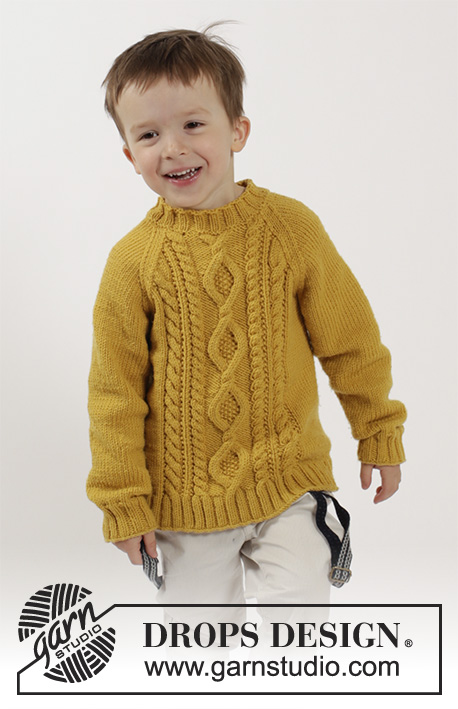 |
||||||||||||||||||||||||||||||
Knitted sweater with raglan and cables in DROPS Merino Extra Fine. Size children 2 - 10 years
DROPS Children 26-3 |
|||||||||||||||||||||||||||||||
|
PATTERN: See diagrams A.1 to A.3. The diagrams show all rows in pattern seen from RS. RAGLAN: Dec for raglan on each side of marker in every transition between sleeves and body. DEC AS FOLLOWS FROM RS: Beg 3 sts before marker and K 2 tog, K 2 (marker is between these 2 sts), slip 1 st as if to K, K 1, psso (= 2 sts dec). DEC AS FOLLOWS FROM WS: Beg 3 sts before marker and P 2 twisted tog, P 2 (marker is between these 2 sts) and P 2 tog (= 2 sts dec). ---------------------------------------------------------- BODY: Worked in the round on circular needle. Cast on 184-200-208-216-224 sts on circular needle size 3.5 mm / US 4 with Merino Extra Fine. K 1 round. Work next round as follows: SIZE 2 + 3/4 + 7/8 YEARS: K 1, * P 2, K 2 *, repeat from *-* 4-5-6 times in total, work rib according to diagram A.1 over the next 58 sts (= mid front), * K 2, P 2 *, repeat from *-* 8-10-12 times in total, K 2, work rib according to diagram A.1 over the next 58 sts (= mid back), * K 2, P 2 *, repeat from *-* 4-5-6 times in total and finish with K 1. SIZE 5/6 + 9/10 YEARS: P 1, * K 2, P 2 *, repeat from *-* 5-6 times in total, K 2, work rib according to diagram A.1 over the next 58 sts (= mid front), * K 2, P 2 *, repeat from *-* 11-13 times in total, K 2, work rib according to diagram A.1 over the next 58 sts (= mid back), * K 2, P 2 *, repeat from *-* 5-6 times in total and finish with K 2 and P 1. Continue rib like this until piece measures 5 cm / 2". Switch to circular needles size US 6/4mm and work next round as follows FOR ALL SIZES: K the first 17-21-23-25-27 sts and dec at the same time 3-5-5-5-5 sts evenly over these sts, work and dec according to A.2 over the next 58 sts, K over the next 34-42-46-50-54 sts and dec at the same time 6-10-10-10-10 sts evenly over these sts, work and dec according to A.2 over the next 58 sts, K the last 17-21-23-25-27 sts and dec at the same time 3-5-5-5-5 sts evenly over these sts. After A.2, there are 160-168-176-184-192 sts on needle. Work next round as follows: 14-16-18-20-22 sts in stockinette st, work pattern according to diagram A.3 (= 52 sts), 28-32-36-40-44 sts in stockinette st, work pattern according to diagram A.3 (= 52 sts) and finish with 14-16-18-20-22 sts in stockinette st. Continue pattern like this. REMEMBER THE KNITTING GAUGE When piece measures 22-25-28-31-34 cm / 8¾"-9¾"-11"-12¼"-13½", work next round as follows: bind off 3 sts for armhole, work the next 74-78-82-86-90 sts as before (= front piece), bind off 6 sts for armhole, work the next 74-78-82-86-90 sts as before (= back piece) and bind off the last 3 sts for armhole. Put piece aside and knit the sleeves. SLEEVE: Worked in the round on double pointed needles. Cast on 32-36-40-44-44 sts on double pointed needles size 3.5 mm / US 4 with Merino Extra Fine. K 1 round. Then work rib = K 2/P 2 until piece measures 5 cm / 2". Switch to double pointed needles size 4 mm / US 6 and work in stockinette st. When piece measures 6-8-8-8-7 cm / 2½"-3"-3"-3"-2¾", inc 2 sts mid under sleeve. Repeat inc every 2-2-2½-2½-2½ cm / ¾"-¾"-⅞"-⅞"-⅞" a total of 10-10-10-11-13 times = 52-56-60-66-70 sts. When piece measures 26-29-32-36-39 cm / 10¼"-11½"-12½"-14¼"-15¼", bind off the middle 6 sts mid under sleeve = 46-50-54-60-64 sts remain on needle. Put piece aside and make another sleeve. YOKE: Slip sleeves on to same circular needle as body where armholes were bound off (without working them first) = 240-256-272-292-308 sts on needle. Insert 1 marker in all transitions between sleeves and body piece = 4 markers. Continue in the round with stockinette st and pattern as before. AT THE SAME TIME on first round dec for RAGLAN in every transition between body and sleeves – see explanation above (= 8 sts dec). Repeat dec for raglan every other round a total of 14-16-16-17-17 times and then every round a total of 3-3-5-7-9 times. AT THE SAME TIME when piece measures 32-35-39-42-46 cm / 12½"-13¾"-15¼"-16½"-18", slip the middle 28-26-26-20-20 sts mid front on 1 stitch holder for neck (work sts before slipping them on the stitch holder). Then finish piece back and forth on circular needle from mid front and bind off for neck at beg of every row in each side as follows: bind off 2 sts 1-1-1-2-2 times and 1 st 1-2-2-2-2 times. After all dec for raglan and bind offs for neck, 70-70-70-68-68 sts remain on needle. NECK EDGE: Pick up from RS on circular needle size 3.5 mm / US 4 approx. 104-104-104-100-100 sts around the neck (includes sts on stitch holder at the front). P 1 round. Then K 1 round while dec evenly to 60-68-76-80-88 sts. Then work rib = K 2/P 2 for 3 cm / 1", then bind off with K over K and P over P. ASSEMBLY: Sew the openings under the sleeves. |
|||||||||||||||||||||||||||||||
Diagram explanations |
|||||||||||||||||||||||||||||||
|
|||||||||||||||||||||||||||||||
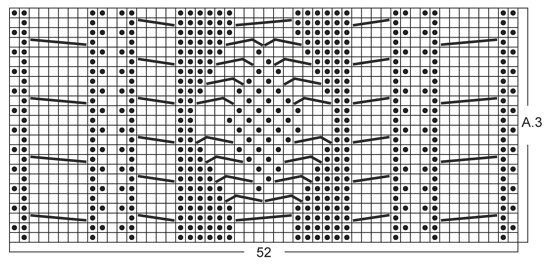 |
|||||||||||||||||||||||||||||||
 |
|||||||||||||||||||||||||||||||
 |
|||||||||||||||||||||||||||||||
Have you finished this pattern?Tag your pictures with #dropspattern #luckyjacksweater or submit them to the #dropsfan gallery. Do you need help with this pattern?You'll find 27 tutorial videos, a Comments/Questions area and more by visiting the pattern on garnstudio.com. © 1982-2025 DROPS Design A/S. We reserve all rights. This document, including all its sub-sections, has copyrights. Read more about what you can do with our patterns at the bottom of each pattern on our site. |
|||||||||||||||||||||||||||||||








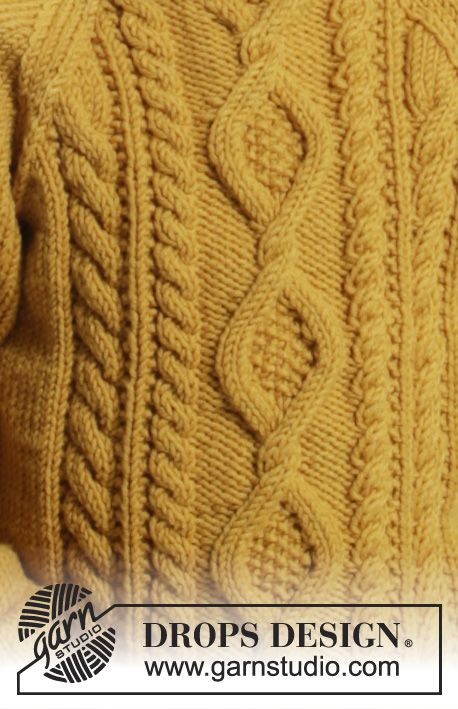

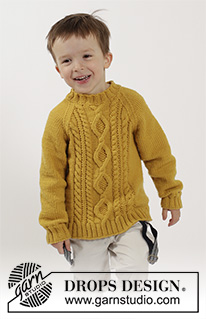
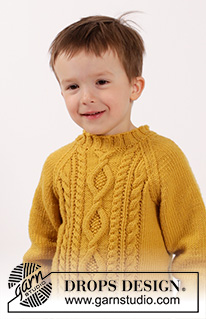
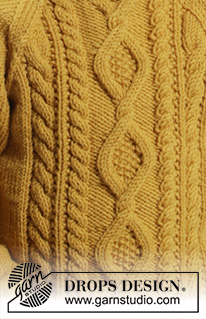






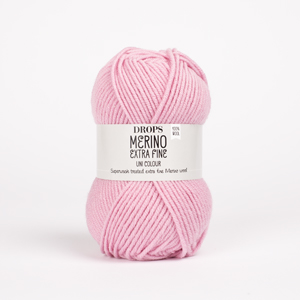
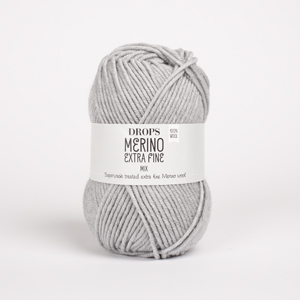
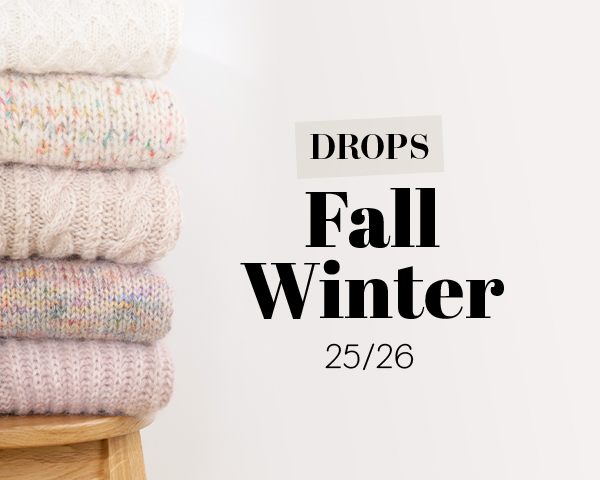
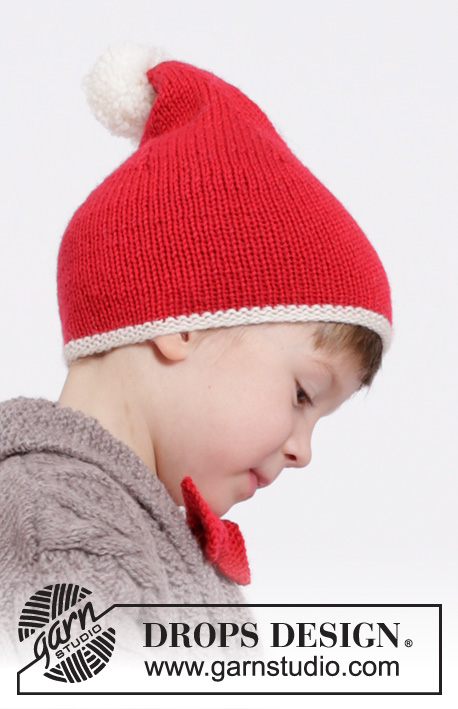
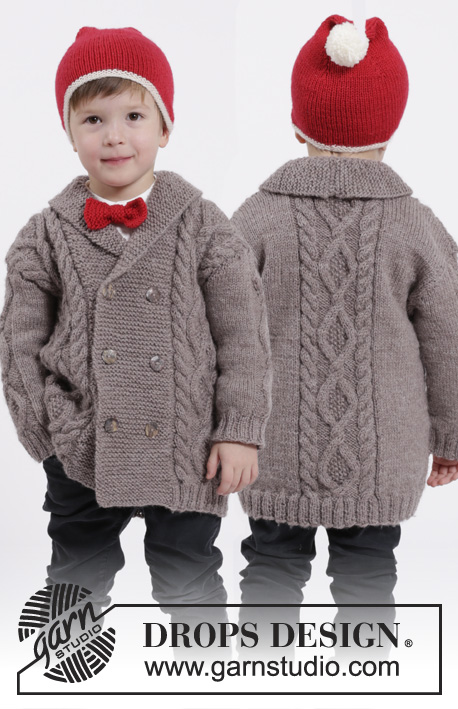
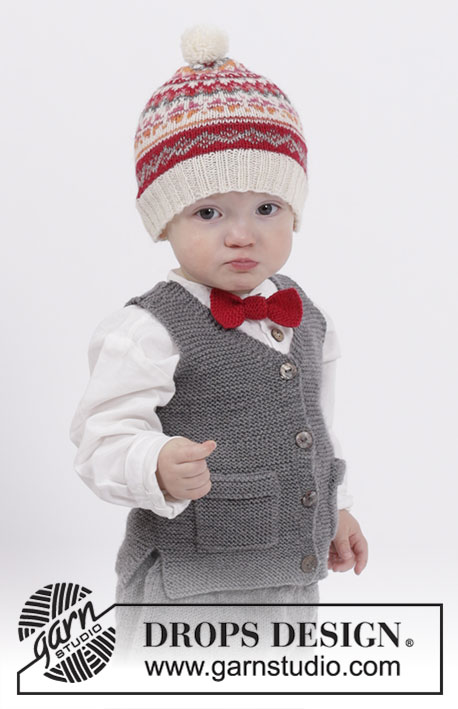



















































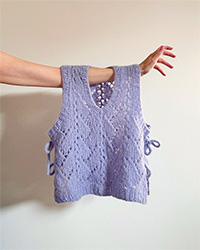

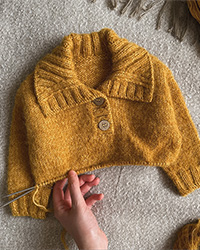
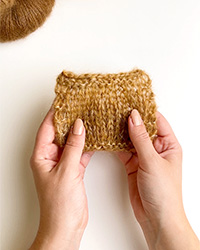
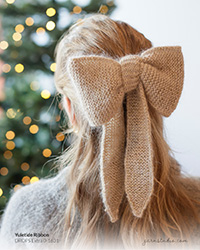
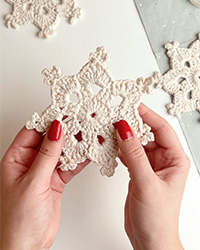
Post a comment to pattern DROPS Children 26-3
We would love to hear what you have to say about this pattern!
If you want to leave a question, please make sure you select the correct category in the form below, to speed up the answering process. Required fields are marked *.